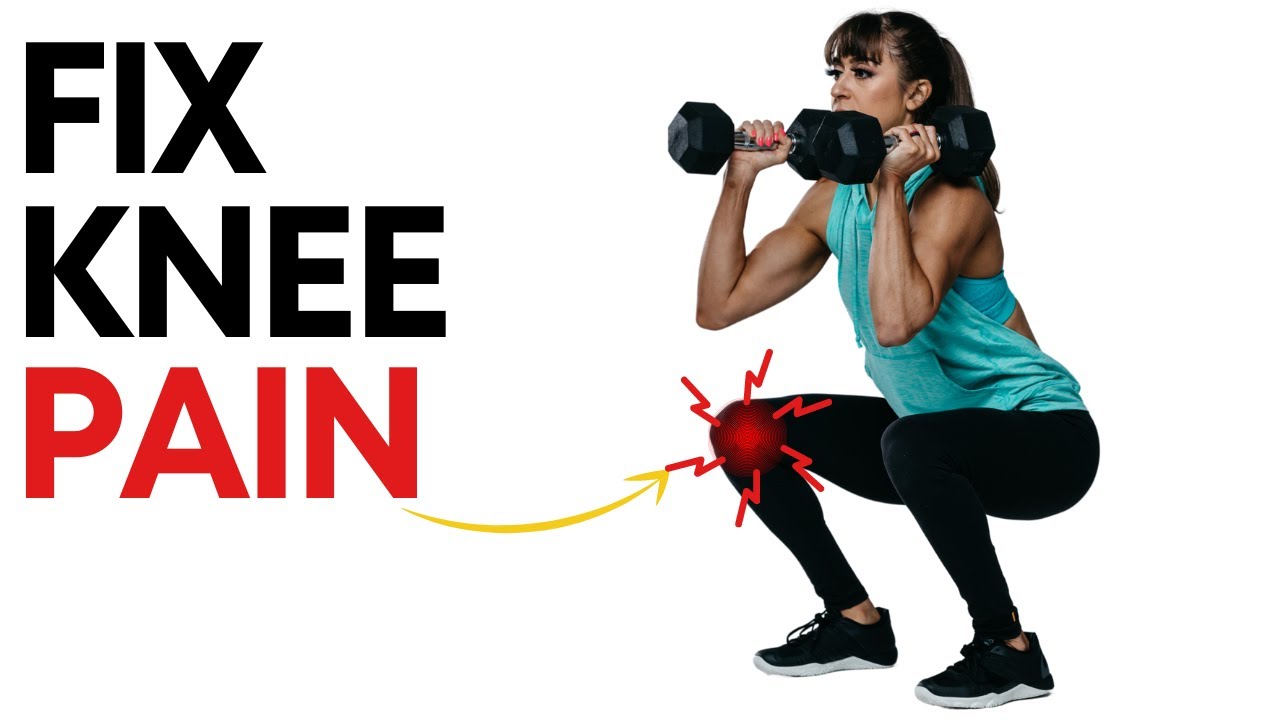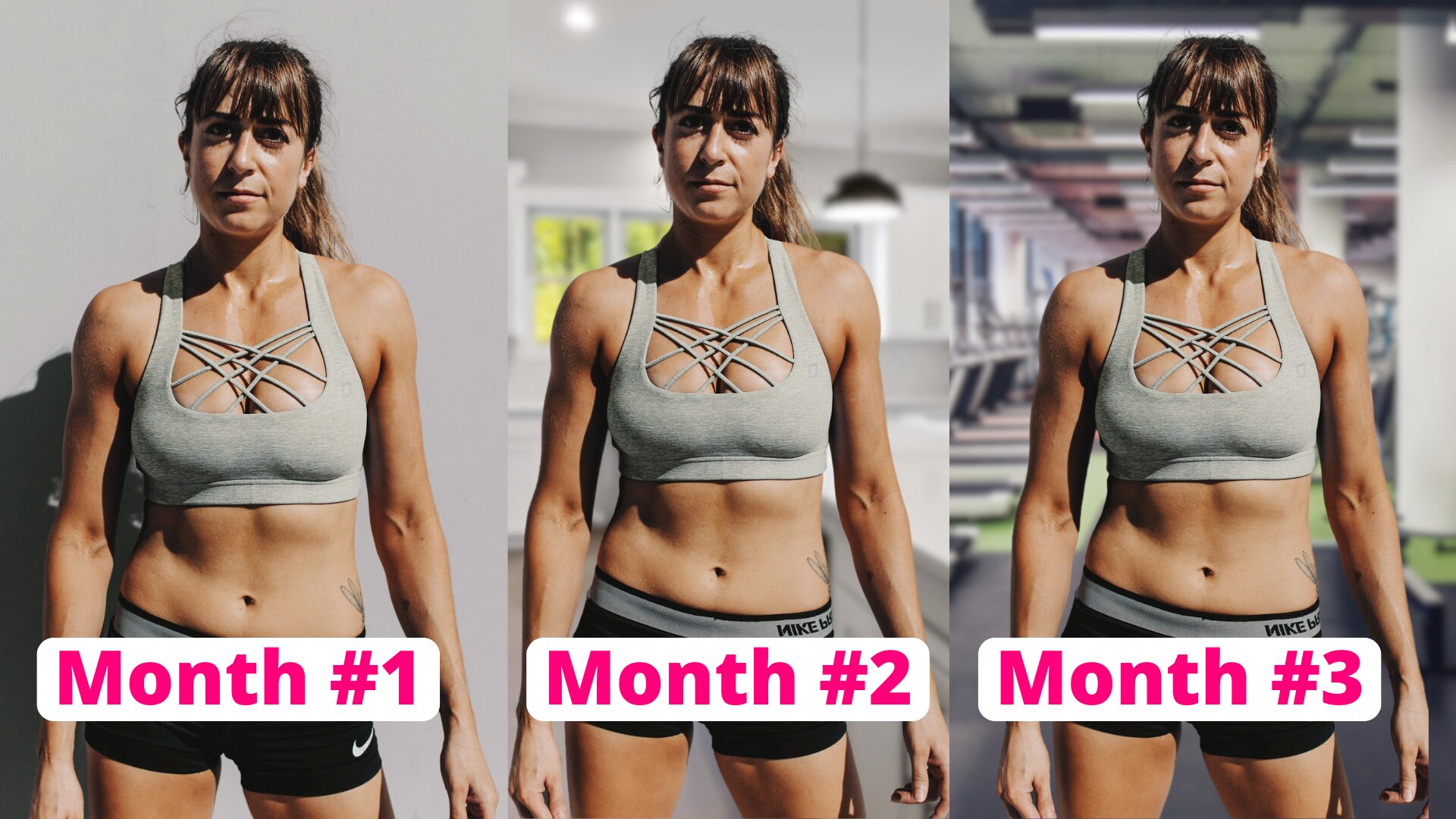Achy and sore knees are an all too common complaint.
And nagging knee pain can become a daily annoyance.
Knee pain can make walking up stairs or getting down on the ground uncomfortable and difficult.
It can make us fear moves like squats and lunges so much that we simply stop doing them all together.
It can hold us back from training intensely.
Knee pain can cause us to simply no longer enjoy the activities we used to love like running or jumping.
And the worst part is often we’ve done a ton of things to TRY to address the problem.
We’ve focused on all of the muscles right around our knee trying to strengthen everything to improve our knee stability.
But all too often this not only doesn’t provide lasting relief, but it actually BACKFIRES.
So if trying to strengthen the muscles right around your knees isn’t necessarily the answer, what is? How can you get rid of nagging knee pain for good?
First, there are two joints you need to be paying attention to instead of just focusing only on your knees…
Your ankles and your hips!
If there is immobility or instability at either one of these two joints, your knees are going to suffer the consequences.
All too often when we lack mobility in one area, we seek out mobility from another.
So if your ankles aren’t mobile? You’re going to search for mobility from your knees! Mobility your knees really aren’t meant to provide!
And instability at your ankles or hips is what can lead to improper alignment up and down your legs, causing muscles around your knees to even become tight and overworked, further perpetuating your aches and pains!
That’s why I want to share 4 essential exercises with you to address both ankle and hip mobility and stability issues.
4 Must-Do Moves To Prevent Knee Pain:
Improving your range of motion and stability at both joints can help you avoid perpetuating your knee issues and even alleviate the overload.
#1: Knee-Friendly Ankle Mobility Stretch
Improving your ankle mobility, specifically your ability to dorsiflex or draw your toes up toward your shin can go a long way in preventing knee pain during squats and lunges, not to mention when you run or ride!
Especially if you are suffering from knee pain currently, many ankle mobility drills can be uncomfortable as your knee will travel even past your toes.
That’s when this Knee-Friendly Ankle Mobility Stretch comes in handy.
Because the ball of your foot is up on a block or weight, you’ve put your ankle into dorsiflexion before you even shift your weight forward.
Most ankle mobility moves require your knee to move past your toe for the full range of motion.
But because of this starting position, your knee doesn’t have to travel forward that much for a full range of motion.
This can help alleviate some pressure on your knees as you work to improve that ankle mobility.
Keeping your heel on the ground with the ball of your foot up, shift your weight forward as much as you can. If your heel starts to lift, you’ve gone too far.
Then shift back and repeat.
#2: Single Leg Toe-Raised Calf Raises
It’s key you activate any weak or underactive muscles if you want to maintain the range of motion you are working hard to build.
If you don’t establish the mind-body connection to those muscles?
You are just going to keep perpetuating the same patterns of overuse, leading to your knee pain.
Having mobile, but also STABLE ankles is key if you want to avoid injury.
That’s why it’s key after you do any mobility work that you do activation moves to strengthen weak muscles and work to maintain that range of motion.
And especially if you’ve ever had issues on just one side, you want to address the imbalance with imbalanced prehab. Which may even mean doing this move on only one side or more reps on one side at least.
I recommend having your hands on a wall or something to help you balance so you can focus not only on driving off the entire ball of your foot for the calf raise, but also so you can focus on dorsiflexing your foot as much as possible as you move to your heel.
Make sure to move slowly lifting your toes toward your shins to sit back on your heel before lowering your foot to the ground to press up onto the ball of your foot. Do not just rock and use momentum.
You can also do this as a bilateral move instead if both sides need equal attention.
#3: TFL Foam Rolling
The TFL or tensor fasciae latae is a hip flexor muscle that is a common culprit of not only hip pain, but also knee and even ankle pain.
This muscle can have a far reaching impact because of it’s connection to the knee through the IT Band.
So if you’re a runner who’s had IT Band or knee issues, you need to include this move as part of your warm up!
When the TFL becomes overactive and tight, it can also try to compensate and work when your glute medius should actually be the prime mover. This perpetuates what has been called gluteal amnesia.
It can inhibit your glute medius from working correctly to support and stabilize your hip, which can also lead to further knee issues.
This simple foam rolling move is key to use even before a glute medius activation exercise as it will help you relax the TFL so it isn’t as likely to try to engage and take over.
Place a ball in the lateral side of your hip and lie slightly propped up on your side with the ball pushing in toward your hip socket.
Relax as you hold. To help the muscle relax and release itself, lift and lower your leg to tense and relax the muscle.
You can prop yourself up more or fully lie over the ball depending on how much pressure you want to create. Make sure you can actually relax as you hold. You don’t want to tense against the pressure.
You may even find standing to hold against the wall is better pressure to start.
#4: Extended ROM Side Lying Leg Raises
Improving your hip stability will help protect your knees. That’s why it is key you include moves to activate your glute medius.
The glute medius is a key hip stabilize, not to mention strengthening it will help prevent your TFL from becoming overworked!
Because a tight and overworked TFL can cause hip internal rotation and external tibial rotation, it can lead to our knees caving in during things like squats.
It can cause tracking issues so that your hips, knees and ankles aren’t all in proper alignment during even exercises like lunges.
Basically, it can lead to movement patterns that end in knee pain.
By strengthening your glute medius, you can prevent this improper movement pattern.
And that’s why moves like side lying raises or abduction exercises are so key.
By lifting this basic move off the ground to perform it on a bench instead, you can allow yourself to work through a bigger range of motion to strengthen the glute medius. This is even a great way to progress that basic move from the floor without adding loads.
Just be conscious you do actually feel your glute medius working and not your TFL taking over.
A great way to help avoid your TFL compensating is to turn your toe down toward the ground as you lift or even kick slightly back.
The internal tibial rotation can help inhibit the TFL while the kick back can slightly engage the glute maximus.
SUMMARY:
Using these four moves you can improve your ankle and hip mobility and stability to help prevent your knee from suffering the consequences of issues at these other two joints!
You can choose to include one or two of these in your warm up routine or combine all four for a quick mobility series. Even just 1-2 rounds through working for 30-45 seconds per move or side can go a long way!
Ready to say “Bye bye” to aches and pains? Check out my Injury Prevention Bundle.
Do the prehab work DAILY to keep those aches and pains away!



I have pain in my right knee probably due to achillies rupture a few years ago. My achillies has healed a bit long and it is proving very hard to build the calf back up again. I can barely do a heal raise! Will this hold me back from being able to correct the knee pain? I’ve worked hard with heel raises and toe walking but it’s very small still!
Yes addressing your ankle issues is definitely key or you may keep perpetuating those compensations that lead to overload!
Thank you I am going to start doing these right away. I have very tight hips which make sense that my kness would hurt. Thanks
I have arthritis in my knees,, I’m 51 years old and have been in this situation for awhile and it’s only get worse,, will these exercise help improve my mobility and subside some pain,,
Glad these help! Staying consistent with that full prehab process is so key!
That full prehab process done daily is key!
When I walk especially down hill it feels like my knees are rubbing bone on bone. So painful
Hope you’re seeing someone to build stability and strength those muscles around as much as possible Gail! I know we messaged on FB too!
I am 56 years old and my right knee has been bothering me. Pain and stiffness. I don’t want to give up my 3mile runs or weight training, but wonder if I’m making it worse by these exercise routines. Is it recommended to stop or slow down on the workouts? Any specific stretches or strengthening (or other ideas) you can recommend?
Seeing someone to determine the cause and do that daily mobility work is key. You may be making things worse if your recruitment patterns or form is off in something you’re doing currently!
It would be beneficial to me if I could have a visual of the exercises.
The video shows all of the moves and modifications. Did you watch through that?